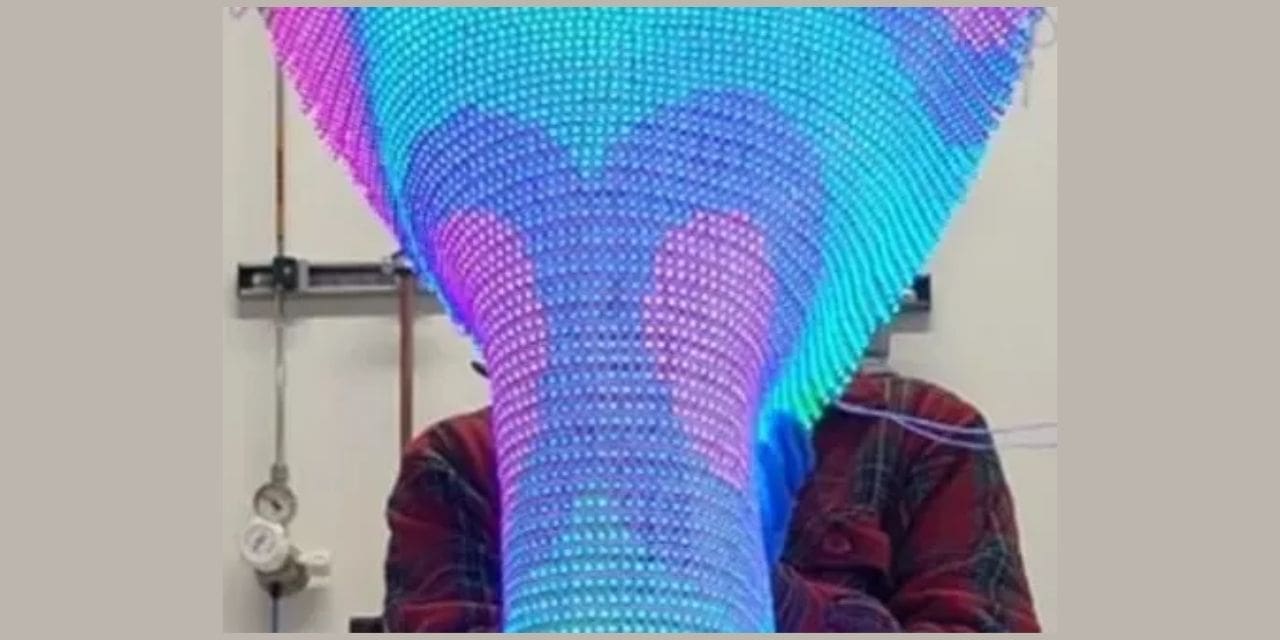A 46-inch woven smart textile display with smart sensors and energy harvesting and storing capabilities has been developed by an international team of experts. Active electronics, sensors, energy, and photonic functionalities are built directly into the fibres and yarns, which may be manufactured utilising conventional textile-based industrial processes.
The applications range from curtains that can double up as televisions, carpets that harvest energy, or interactive, self-powered clothing and fabrics. This is the first time that a fibre-based manufacturing approach has been used to integrate scalable, large-area complex systems into textiles. The functionality, dimensions and shapes of current smart textiles are limited by the manufacturing processes.
Conventional weaving or knitting processes can be used to integrate the newly developed fibres into textiles, which allows them to be integrated into a number of everyday objects. So far the manufacturing of such fibres have been limited by size, or the technology has not been compatible with the textiles and the weaving processes. The researchers coated each fibre component with materials that can withstand the stress of stretching caused by mechanical textile manufacturing equipment. The team also improved the reliability and durability of some of the components by braiding the fibres. Multiple fibre components were connected using conducting adhesives and laser welding.
The woven fabric produced by combining and integrating all these processes allows for incorporating multiple functionalities into fabrics that can be produced using standard, scalable textile manufacturing processes. The fabrics can operate as a display, monitor various inputs, or act as power banks. The fabrics can also detect radio signals, touch, light and temperature. The fabric can also be rolled up, and allows for large rolls to be manufactured. The researchers envision a range of next generation e-textile applications including energy efficient buildings that can produce and store their own energy, internet of things, solar panels, supercapacitors, batteries, distributed sensor networks and interactive displays that are flexible and wearable.

